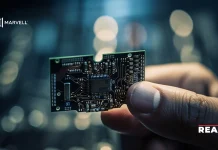Martin Peryea, EVP, and GM of Electric Air Mobility of the AIRO Group, continues to lead Jaunt toward success in the emerging world of eVTOL players. “The eVTOL [electric vertical takeoff and landing] industry in 2022 has demonstrated that the market for air taxis is indeed coming, and the regulatory community is facing the challenges head-on,” says Peryea.
“Entering into this market, having certified several aircraft, the design of the Jaunt Journey was based on bringing the proven SRC [Slowed Rotor Compound] technology to market with a clear certification path as a rotorcraft”
In 2022, the FAA redefined the certification rules for eVTOLs to include the powered-lift category. According to the FAA, the revised definitions represented an important step in making commercial air taxi’s a reality. In tandem, rules for certifying pilots for powered-lift aircraft and new operational requirements were also defined. More recently, FAA Administrator Billy Nolen stated the agency did not expect operations by eVTOLs until early 2025 and said, “At any rate, it won’t happen until the safety piece has been satisfied.”
Also Read: Nuclear Operator Optimizes Plant with GSE Solutions’ New TSM Enterprise Platform Upgrades
“Entering into this market, having certified several aircraft, the design of the Jaunt Journey was based on bringing the proven SRC [Slowed Rotor Compound] technology to market with a clear certification path as a rotorcraft,” said Peryea. The powered lift does not impact Jaunt in certifying as a rotorcraft, as Parts 27 & 29 already address vertical takeoff and landing requirements. Regarding safety, Jaunt’s proprietary SRC technology allows the aircraft to land via autorotation or by gliding in a controlled fashion should there be an unexpected total loss of propulsion. The pilot of the Jaunt Journey will be able to choose a safe landing spot and have complete control of the aircraft during descent. No ballistic parachute is required.
The company is very confident about the SRC system’s technology maturity and its technology partners’ ability to meet Part 29 requirements, which will also comply with the EASA Special Condition for VTOL (SC-VTOL) for “Category Enhanced.” Compared to the requirements of Part 23 and Part 27, Part 29 requires that flight critical systems meet the requirements of the probability of catastrophic failure of less than 10-9 per flight hour.
SOURCE: Businesswire




